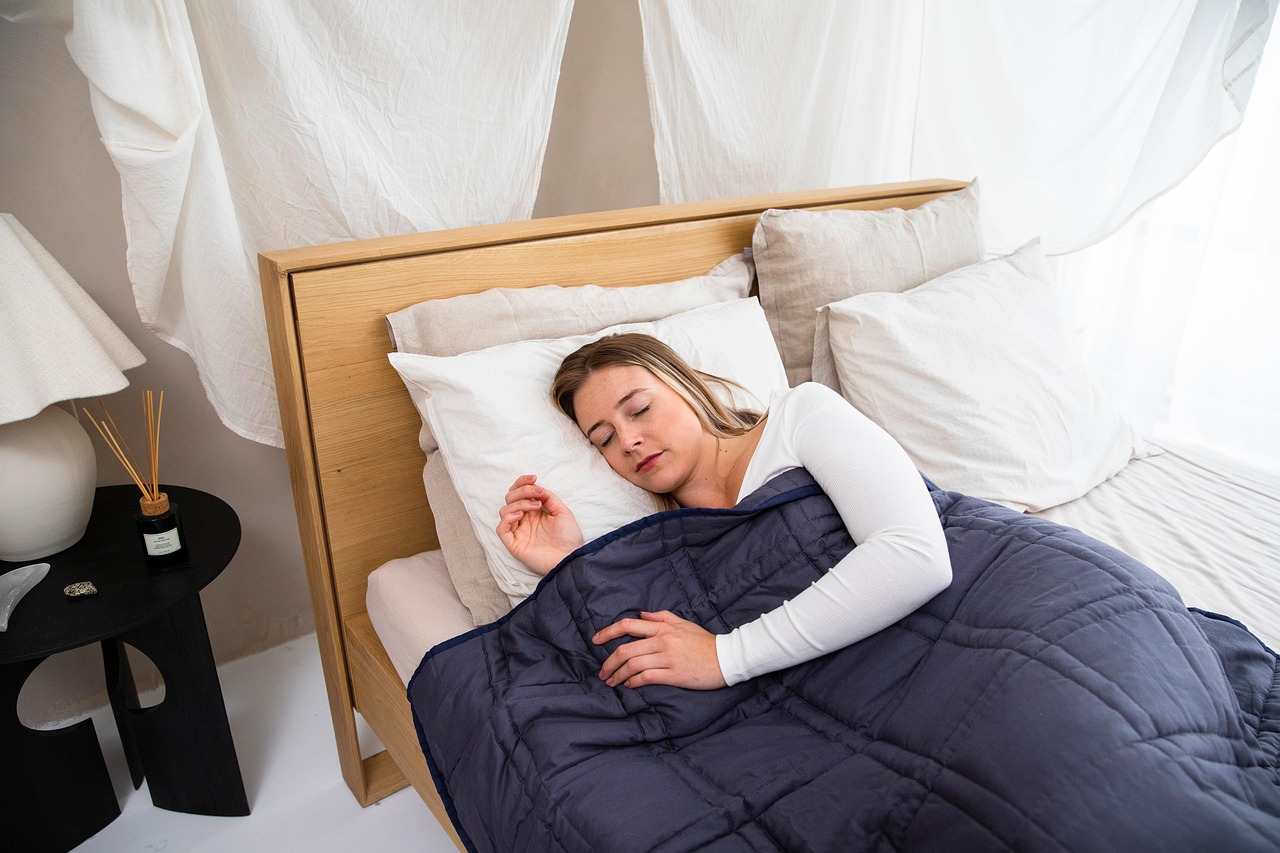Do you ever wake up feeling stiff, sore, or just generally unrested, despite logging what you thought was a full night’s sleep? The culprit might not be how long you’re sleeping, but rather how you’re sleeping. Your sleep position can dramatically impact everything from snoring and back pain to digestion and even wrinkles. Understanding the pros and cons of each position can empower you to make informed choices for better sleep health and overall well-being.
The Back Sleeper: Supine Serenity
Benefits of Sleeping on Your Back
Sleeping on your back, also known as the supine position, is often considered the gold standard by many experts for a variety of reasons:
- Spinal Alignment: This position allows your head, neck, and spine to rest in a neutral position, minimizing pressure points and reducing the risk of back and neck pain.
- Reduced Wrinkles: Because your face isn’t pressed against a pillow, it helps prevent sleep wrinkles, which can become permanent over time. Think of it as free anti-aging!
- Better Sinus Drainage: Elevating your head slightly with a pillow helps drain sinuses and reduce congestion.
- Example: Imagine a straight line running from your head down your spine. When you’re on your back with proper pillow support, that line remains straight, promoting healthy alignment.
Downsides of Sleeping on Your Back
While beneficial for many, back sleeping isn’t without its drawbacks:
- Snoring: It can exacerbate snoring and sleep apnea because gravity causes the tongue and soft tissues in the throat to relax and potentially obstruct the airway.
- Not Ideal for Pregnancy: Later in pregnancy, this position can compress major blood vessels, reducing blood flow to the uterus and fetus.
- Data Point: Studies show that back sleeping can worsen sleep apnea symptoms in up to 50% of individuals.
How to Optimize Back Sleeping
- Use a Pillow That Provides Proper Neck Support: A contoured pillow or a thin pillow can help maintain the natural curvature of your neck.
- Place a Pillow Under Your Knees: This helps reduce strain on your lower back.
- Consider an Adjustable Bed: If you suffer from snoring or sleep apnea, slightly elevating your head and torso can improve breathing.
The Side Sleeper: Lateral Comfort
Advantages of Sleeping on Your Side
Side sleeping is a very popular position with a number of advantages:
- Reduced Snoring and Sleep Apnea: Compared to back sleeping, it generally reduces snoring and sleep apnea symptoms by keeping the airway more open.
- Good for Digestion: Sleeping on your left side, in particular, is often recommended for improving digestion, as it allows gravity to assist the movement of waste through the colon.
- Beneficial During Pregnancy: It’s the recommended position for pregnant women, especially on the left side, as it improves blood flow to the uterus and fetus and prevents pressure on the liver.
- Example: Pregnant women are often advised to sleep on their left side to maximize blood flow and nutrient delivery to the baby.
Disadvantages of Sleeping on Your Side
Despite its benefits, side sleeping can have some drawbacks:
- Shoulder and Hip Pain: Lying on one side for extended periods can put pressure on your shoulder and hip, leading to pain and stiffness.
- Facial Wrinkles: Similar to stomach sleeping, side sleeping can contribute to facial wrinkles on the side you sleep on most frequently.
- Potential for Jaw Issues: Sleeping on one side can exacerbate jaw pain and temporomandibular joint (TMJ) disorders.
Tips for Optimal Side Sleeping
- Use a Pillow That Fills the Space Between Your Ear and Shoulder: This keeps your spine aligned.
- Place a Pillow Between Your Knees: This prevents your upper leg from pulling your spine out of alignment and reduces pressure on your hips.
- Alternate Sides: Switching between your left and right side can help distribute pressure and prevent stiffness.
- Consider a Body Pillow: A body pillow can provide additional support and prevent you from rolling onto your stomach.
The Stomach Sleeper: Prone Problems
The Limited Benefits of Stomach Sleeping
Stomach sleeping, also known as the prone position, is generally considered the least desirable sleep position by most experts. There are very few benefits:
- May Reduce Snoring (Sometimes): In some individuals, it may temporarily alleviate snoring. However, the drawbacks usually outweigh this potential benefit.
Significant Downsides of Stomach Sleeping
The cons of sleeping on your stomach far outweigh the pros:
- Neck Pain: You have to turn your head to the side to breathe, putting significant strain on your neck muscles and joints.
- Back Pain: This position arches your back unnaturally, putting pressure on your spine and potentially leading to lower back pain.
- Facial Wrinkles: Pressing your face against a pillow for hours can accelerate the formation of wrinkles.
- Example: Imagine trying to hold your head turned to one side for an extended period during the day. That’s essentially what you’re doing all night when you sleep on your stomach.
- Statistic: Studies have shown that stomach sleepers are significantly more likely to experience neck and back pain compared to back or side sleepers.
How to Mitigate the Risks of Stomach Sleeping (If You Can’t Avoid It)
- Use a Thin Pillow or No Pillow: This minimizes the angle of your neck.
- Place a Pillow Under Your Hips: This helps to reduce the arch in your lower back.
- Stretch Regularly: Perform neck and back stretches throughout the day to counteract the strain of this position.
- Try to Transition to Side Sleeping: Gradually train yourself to sleep on your side using pillows or other aids to prevent rolling onto your stomach.
The Fetal Position: Curled Up Comfort?
Understanding the Fetal Position
The fetal position, where you curl up on your side with your knees drawn towards your chest, is a variation of side sleeping.
Potential Benefits of the Fetal Position
- Comfort and Security: Some people find this position inherently comfortable and feel a sense of security and protection.
- May Reduce Snoring: Similar to side sleeping, it can help to reduce snoring compared to back sleeping.
Downsides to Consider
- Restricted Breathing: A tightly curled fetal position can restrict breathing by limiting diaphragm movement.
- Joint Stiffness: Staying in this position for extended periods can lead to stiffness in your joints, particularly your back and hips.
- Can Exacerbate Existing Conditions: Might worsen arthritis or joint pain.
Tips for a Healthier Fetal Position
- Loosen the Curl: Avoid curling up too tightly. Try to keep your legs relatively straight and avoid bringing your knees all the way up to your chest.
- Use a Pillow for Support: Place a pillow between your knees to maintain spinal alignment and reduce pressure on your hips.
- Alternate Sides:* Switching between your left and right side will help to distribute pressure and prevent stiffness.
Conclusion
Choosing the best sleep position for you is a personal decision based on your individual needs and comfort. While back sleeping often gets the nod from experts due to its spinal alignment benefits, side sleeping is a close second, particularly for those with snoring or pregnancy. Stomach sleeping, on the other hand, should ideally be avoided due to its potential for neck and back pain. Experiment with different positions and supportive pillows to find what works best for you. Remember to consult with your doctor or a physical therapist if you experience persistent pain or discomfort, as they can provide personalized recommendations for optimal sleep posture and overall sleep health. Ultimately, a good night’s sleep is essential for your well-being, and understanding your sleep position is a crucial step towards achieving it.




